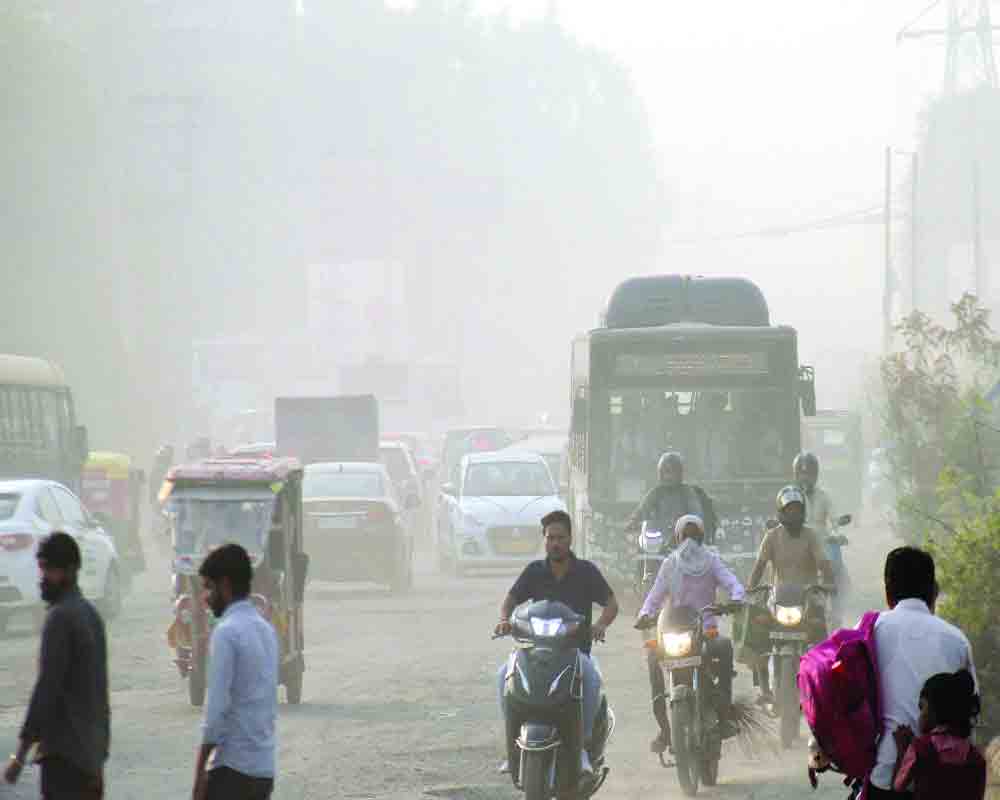Very poor air quality despite lesser stubble burning is a serious concern for Delhi-NCR
The shapeless monster of air pollution is haunting the National Capital Region once again, and it has become rather an annual affair. Come winter, Delhiites have to breathe and live with “very poor” air. India's Capital has long grappled with the issue of air pollution and it appears there is no way out. Even as you read it, the air quality in Delhi remains "very poor"; the Air Quality Index (AQI) has already breached the 300-mark. This situation raises concerns about the city's ability to combat air pollution effectively. Ironically, this year, so far there has been almost a 50 per cent reduction in stubble burning cases in the farms of Haryana and Punjab, but AQI is still hovering around the 300+ mark, which is considered ‘hazardous’ in the US and is an ‘emergency’ callout. But in Delhi, it is ‘normal’ with people enveloped in the deadly smog going about their daily lives. All the containment measures you can see on the roads include a few water sprinkler trucks spraying water in their feeble attempt to combat pollution in the city. Right now, the AQI is showing an upward movement. It plainly indicates that air quality is worsening as we approach November, one of the worst months to be in Delhi. In some areas within Delhi, the situation is even more alarming. In the Delhi University area, the AQI stood at 316. Delhi's air quality woes are not confined to the city alone; neighbouring regions, including Gurugram, Ghaziabad and Faridabad, also grapple with "poor" air quality.
Indeed, the NCR's collective air pollution issue demands a comprehensive regional approach to address this life-threatening problem. It is not for the first time that heavy winter air mixed with vehicular exhaust and stubble smoke would play havoc with people’s lives in the NCR. But the plan to fight it is conspicuous by absence. Mercifully, the incidents of stubble burning by neighbouring States have reduced compared to last year. But unfavourable meteorological conditions will soon lead to a spike in air pollution. Besides, the harvest is not completed yet as the festive season is delayed this year, which may significantly raise the AQI. Also, bureaucratic problems plague the fight against pollution. The Ministry of Earth Sciences' System of Air Quality and Weather Forecasting and Research (SAFAR), which used to provide data on farm fires' contribution to Delhi's air pollution, has recently stopped providing updates. The reasons for this are unclear, but it further impacts the efforts to combat pollution effectively. The New Delhi Municipal Council (NDMC) has deployed mechanical road sweepers and acquired eight anti-smog guns as part of a comprehensive "Air Pollution Control" plan for 2023-24. But do these suffice for a city spread over 1483 sq km? The answer is a resounding 'no'. These are piecemeal steps with little or no impact on AQI. Authorities know that once winter is gone, so will people’s complaints. But for the citizens, especially those suffering from bronchial ailments, the less said the better.
























